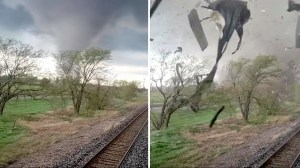PBS Eons looks at the vast and expansive world that ants have created for themselves through evolutionary advances that took place over millions of years.
How did ants take over the world? Well, it looks like they didn’t achieve world domination all by themselves. They may have just been riding the wave of a totally different evolutionary explosion.
Ants began as a family of flightless wasps, yet as their environment began to include flowering plants and their dietary habits became more herbivore, the number of ant species began to grow.
The gradual takeover of these forests by flowering plants had bumped up the moisture levels at greater heights.This made the forest canopy more hospitable to ants, as well as the smaller arthropods that they hunted. Multiple ant lineages began incorporating plant-based food sources into their diets too…And many plants responded by independently developing specialized structures that kept the ants hanging around. This probably happened because the ants helped ward off more destructive pests and herbivores….
In modern times, the population of ants outweigh that of larger animals.
And in the time since their origin in the Mesozoic Era, they’ve radiated into more than 14,000 known species across 16 living and 5 extinct subfamilies. There’s probably more species of them around today than all mammals and birds combined.






